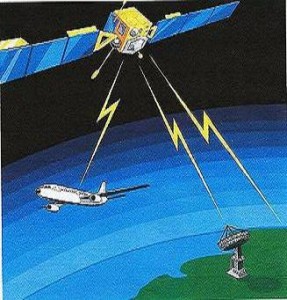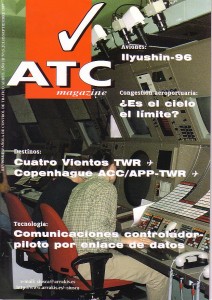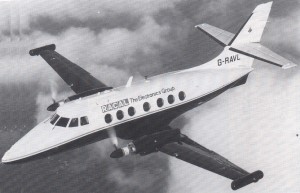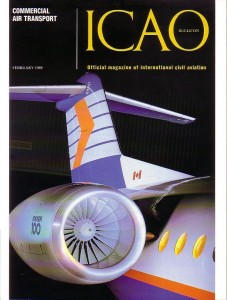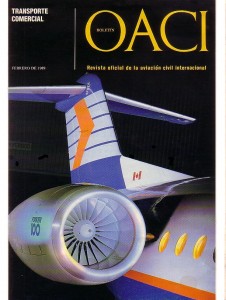Controller Pilot Data Link Communications (CPDLC)
INTRODUCTION
The shortcomings of the present air/ground voice communications system include:
- Saturation of voice channels due to the congestion of the aeronautical band;
- Communications difficulties in the HF band due to its reliability limitations;
- Language difficulties or misunderstandings between controller and pilot, poor or non-standard phraseology and misinterpretation or corruption of messages; and
- Lack of digital air/ground data links to support the exchange of data messages directly between automated systems in the air and on the ground.
Although their effects are not the same for every part of the world, it is evident that one or more of these factors inhibit the further development of air navigation almost everywhere.
In very high density traffic airspaces for example, where ATC capacity cannot be increased any longer by means of successive sectors subdivision, automated ATC systems which will perform part of controller’s routine work will be the only solution to cope with current and future traffic.
These automated systems, which will reduce controller´s workload per aircraft, will allow controllers to accept and manage more traffic and therefore increase ATC capacity, reduce delays, and increasingly authorize more direct trajectories. These automated ATC systems will require to exchange data messages directly with aircraft.
In order to overcome the shortcomings identified above, voice will progressively be replaced by data. It may take many years in some places, but at the end voice will only be used for emergency and non routine communications.
Controller-to-pilot and pilot-to-controller data messages will need to be transferred in the shortest time possible, especially in very high density traffic airspaces where aircraft will have to fly very close to each other.
The length of a data message has a huge impact on message transit delay (time elapsed between a message is transmitted and it is received at the other end of the data link) and communications costs, especially when satellite data link is being used and therefore communications costs depend on the number of bits being transmitted. ATC data messages, especially high priority ones, should be the shortest in length possible in order to be transferred rapidly.
Fortunately most transactions between pilot and controller and controller and pilot are performed by means of a small number of different messages, such as “climb to and maintain flight level …”. The text of these messages could be correlated with numbers (0,1,2,3,….etc.), these numbers in turn, if for example they were not more than 256 could be encoded in just one octet (8 bits) and transmitted in place of the messages themselves. Of course, de-coding and de-correlation is needed at the receiving end of the data link in order to replace the encoded number with the message itself before presenting it to the pilot or controller.
The numbers could be used without reference to a given language, and would have its equivalent to any language selected by the user at each end of the data link. For this purpose, “numbers-messages dictionaries” should be developed, one for each language required.
Is evident that transmitting the message reference number instead of the message itself implies a very significant reduction in transmission length, and therefore a reduction of communication channel loading and message transit delay.
Selection of language (dictionary) could be done at both ends of the data link, avoiding the need of having to use a language not well-known to the user. For example, the pilot could be using English and the controller Russian. This could avoid problems related to language difficulties or misunderstandings between controller and pilot, poor or non-standard phraseology, and misinterpretation of messages.
The use of plain language (data messages not correlated with numbers) would continue to be necessary for non routine messages not included in the “numbers-messages dictionaries”.
A working paper titled “ATS messages coding”, presenting all the above ideas and proposing to reduce the size of the ATS messages by using a message reference number instead of the message itself, was submitted by Spain to the ICAO Aeronautical Mobile Satellite Service Panel (AMSSP), second meeting, Montreal, 28 March – 7 April 1989. The following is quoted from the meeting Report on Agenda Item 4:
“The paper proposing to establish a common message compact coding scheme as well as standard phrase coding for ATS was discussed. The panel acknowledged the value of such an approach on reducing communication channel loading”
Click here to see the Inglish version of Spanish paper: ATS MESSAGES CODING
Click here for the Spanish version: CODIFICACION DE MENSAJES ATS
The panel also issued a recommendation urging to develop message encoding schemes so as to be adopted by ICAO as soon as possible.
The Spanish working paper was considered by the ICAO SICAS Panel that was developing Data Link Applications Coding (DLAC) SARPs, but following a different approach, based on text compression. The SICAS Panel finally incorporated many of the ideas expressed in the Spanish paper, including the use of a reference number instead of the corresponding text message.
Click here to see letter from Dr. Vincent A. Orlando , member of the SICAS Panel.
CPDLC
ICAO has developed and published in 1995 Circular 256-AN/152 containing requirements and procedures related to data communications between controller and pilot. This material, which is the result of years of work, has been named CPDLC.
Controller-Pilot Data Link Communications (CPDLC), which is an integral part of the ICAO CNS/ATM systems (FANS concept), is defined in the ICAO Circular as a means of communications between controller and pilot using data link instead of voice. CPDLC includes clearances, expected clearances, requests, reports and related ATC information. A “free-text” capability is also provided to exchange information not conforming to pre-defined formats.
CPDLC will significantly change the way pilots and controllers communicate. Sending a message by CPDLC consists of selecting the addressee (aircraft callsign or ATC unit identification), selecting the appropriate message from a displayed menu or by other means which allow fast and efficient message selection, and executing the transmission. Nevertheless voice communications will be available to supplement data link system operations.
CPDLC will be applied in order to overcome a number of shortcomings of voice communications, such as voice channel congestion, misunderstandings due to bad voice quality and/or misinterpretation, and corruption of voice messages due to simultaneous transmissions.
CPDLC will also be applied to allow direct and efficient linkages between ground and cockpit systems, which will in turn reduce controller and pilot workload and will allow to increase air-traffic system capacity.
CPDLC shall be used to replace voice only when it implies a reduction in controller´s workload or in situations where the use of voice communications is considered not efficient. ICAO recommends that the effect of CPDLC on operations should be carefully studied before deciding the extent to which voice will be replace by data link
A CPDLC system consists of six major components: pilot interface, airborne avionics, data link, ground communications interface, ATC automation and controller interface. Both pilot and controller interfaces shall be efficient, easy to operate, provide a rapid message input mechanism and a means to display air-ground messages. In accordance with the ICAO Circular, air traffic services providers are the one to define and develop specific controller interfaces tailored to their particular needs.
In order to reduce the length of the messages to be transmitted via the data link, in turn reducing message transit delay and channel loading, CPDLC uses the same basic philosophy as proposed by Spain to the Aeronautical Mobile Satellite Service Panel, second meeting, in April 1989. CPDLC transmits via the data link the message reference number (a few bits) instead of the message itself (generally many bits).
The ICAO Circular contains a numbers-messages dictionary which correlates message reference numbers with message texts.
Click below to see ATC magazine article on CPDLC
ATC Magazine Nº 13 JULY / SEPTEMBER 1997
FIRST FLIGHT CONTROLLED BY MEANS OF SATELLITE CPDLC
From 1987 to 1990, David Diez participated in the planning, coordination, management and implementation of the European Space Agency (ESA) satellite communications project PROSAT/PRODAT, in which the Spanish DGAC, the British CAA and EUROCONTROL were involved.
Click to see supporting DGAC CERTIFICATE
The PROSAT/PRODAT was mainly a pioneer experimental program on Automatic Dependent Surveillance (ADS) and Controller Pilot Data Link Communications (CPDLC), using INMARSAT satellites.
During the trials the Spanish DGAC succeeded in being first in controlling a flight by means of satellite CPDLC. The aircraft was a Jetstream owned by RACAL
Click below to see ICAO magazine article giving details on this subject:
ICAO Bulletin FEBRUARY 1989
PRODAT/PROSAT data links successful in controlling jet flight
Boletín OACI FEBRERO 1989
Los enlaces de datos PRODAT/PROSAT logran controlar el vuelo de un reactor
Bulletin OACI FEVRIER 1989
Premier vol controlé via une liaison de données par satellite PRODAT/PROSAT

